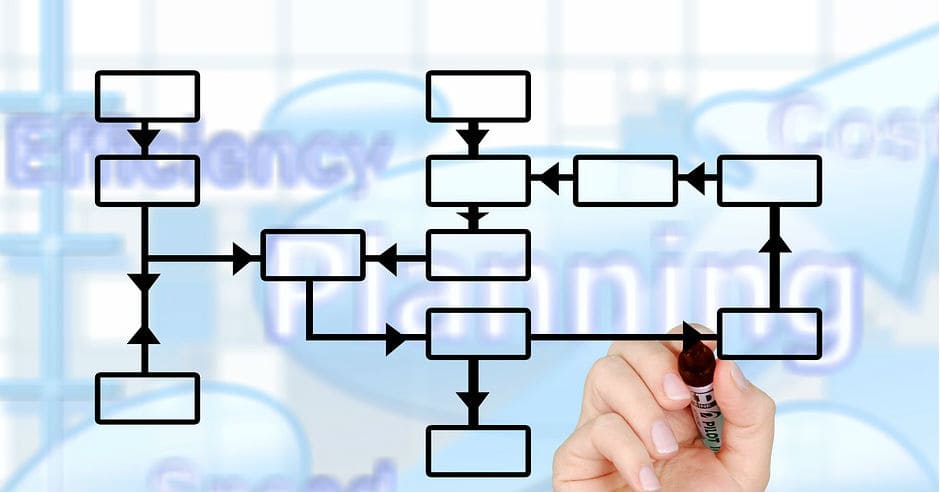Data forms a priceless asset for any business. But, that does not mean having a database with a large number of record is sufficient for business growth. You must also cleanse the database always so that you can perform data analytics well and reap maximum benefit out of it. Did you know that data experts spend 80% of their time cleaning the data and the spare 20% on analyzing it? And do you know why? Because many things could go wrong in your database – be it the creation, linking, configuring, formatting, out-of-date errors, spelling mistakes, extra spaces, duplications, and so on.
What is Data Cleaning?
No matter what type of data you own, data quality is always essential. Old and inaccurate records in your database will surely have an impact on results. Cleaning service is the only savior in such scenarios! Let us see what it is and how can it help your business. Data Cleaning is a process of spotting inaccurate, unfinished, missing, or non-relevant records from a given table, dataset, or database and then removing (or correcting) it. One can perform this procedure as batch processing via scripting or interactively with some tools.
Benefits of Cleaning Process
Organizations can gain many benefits by maintaining a high-quality marketing database. Here are a few of them:
- Business enterprises can quickly boost their client acquisition efforts.
- Fewer errors will result in fewer frustrated employees and happier buyers.
- Clean data supports all-round business intelligence and better analytics to promote better decision making.
- Abolishing duplicate data can help businesses to streamline industry practices and thereby save money.
- Having a clean and properly maintained database maximizes the staff’s efficiency and productivity.
- Clean data significantly reduces the number of returned emails.
- It also saves the time and effort from contacting customers with out-of-date information or creation of invalid vendor files in the system.
- It can drastically improve response rate and revenue.
Well, now you know the importance of this services. What is the next step? Few tricks to getting your data clean quickly and effortlessly.
How to Perform this Process?
Before beginning with this project, it is vital to take a first look at the big picture. It includes understanding your goals and expectations. And also how each member of your team are planning to achieve from it. Once you are aware of the answers, you can jump-off to the first step.
1. Standardize Your Processes
Data standardization has always been a crucial part of ensuring data quality. Lack of uniformity will result in weak data, which in turn produces adverse effects such as sending wrong emails, mailing to incorrect addresses, or losing the client altogether. Therefore, it’s always crucial that you regulate the point of entry and learn its importance. By doing this, you can ensure a good entry point and reduce the risk of replication.
- Learning the Data Entry Points: You must know where and how the data is collected. It helps to decide whether normalization is required or not.
- Choosing the Right Data Standards: Turning the obtained data into a standardized list gives you a capability to take actions that otherwise would be hard or impossible.
- Outlining the Normalization Matrix: A normalization matrix will map all the dirty data to your newly set standard data values. But always remember that data normalization is a continuing process for refining data quality over time.
2. Monitor Structural Errors
The next step involves identifying and fixing all the significant errors. Structural errors are those which arises in the course of data shift, measurement, or other data management tasks. Some of the common cases are:
- Mislabeled Types: Usage of multiple fields that have the same meaning. For instance, ’N/A’ and ’Not Applicable.’ You can combine these two separate classes.
- Typos (typographical error): An error occurred while typing or printing, primarily because of hitting a wrong key on a keyboard.
- Inconsistent Capitalization: Capitalization errors usually involves names, titles, acronyms or initial-letter abbreviations.
Once you find the errors, keep track of it. It helps you to learn where most of the errors are coming from, so you can fix the false or dirty data quickly. This process is vital if you are blending other solutions with your data management software.
3. Filter the Outliers
Outliers are values that are considerably distinct from all other observations. Always try to classify such values and remove them as early as possible. It can otherwise cause severe problems with specific models. For instance, decision tree models are more robust to outliers than the linear regression type. Therefore, removing an outlier will help your model’s performance. But, you must note that some outliers are very informative. So, just removing it must not be your sole concern. Make sure you have a valid reason for removing an outlier, such as uncertain measures that are unlikely to be real data.
4. Search for Missing Data
Businesses cannot simply snub missing values in the database. The fact that this value may be informative in itself. Plus, you often need to make predictions on the data you own. So, you must always find some helpful tools to handle the missing pieces as most algorithms do not accept them. Identifying and filling the missing gaps in the dataset is one of tricky steps in this service.
- If you are capable of finding the missing data, add them to the database.
- Otherwise, you can label them as ’Missing’ so the algorithm can approve it.
This technique of flagging and filling lets the algorithm estimate the optimal constant for the miscue, instead of filling it in with the dummy data.
5. Scrub Duplicate and Unwanted Data
The next step involves removing unwanted observations, such as duplicate or irrelevant data. Duplicate records often arise during the data collection process, such as while merging the datasets from many places, scraping data, or getting it from clients (or other units). Whereas, the irrelevant observations are those that do not fit the specific database or the problem that you are trying to solve. Checking for irrelative observations and redundant records before engineering the features can save you many problems down the road.
With the proper researching and funding in many tools, firms can parse the raw data in bulk, remove the copies and unrelated records soon. It helps you save time as well as effort while interpreting the data.
6. Final Analysis for Data Accuracy
Validate the precision of your database after the completion of standardization, scrubbing, and other cleaning means. Data validation provides certain well-defined guarantees for data quality such as fitness, accuracy, and coherence of various kinds. Verifying the correctness of dataset by re-inspecting and making sure it complies with the intended rule is a crucial step. For instance, the newly added data to fill the gap in the database may break any of the rules or constraints. In such cases, you can utilize some tools or perform manual revision to rectify the errors.
Take Away
From improved customer relationships to increased profit through targeting; there are various benefits of having high-quality database. Hence, every business owner must ensure that their data is clean by executing the right cleaning process and a quality maintenance routine. It will not only save time and money but also assures that the firm achieves overall operational efficiency. So, why wait? Start implementing these simple yet vital methods in your business and reach the goals with ease.





